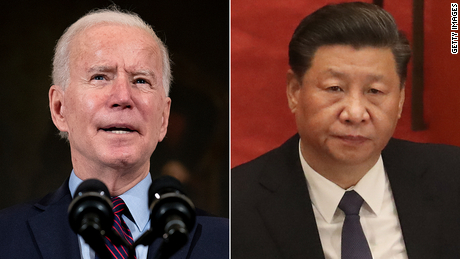The new China Mission Center “will further strengthen our collective work on the most important geopolitical threat we face in the 21st century, an increasingly adversarial Chinese government,” CIA Director William Burns said in a statement, echoing what the veteran diplomat had said during his Senate confirmation hearings would be among his main priorities at the helm of the agency.
Other adjustments included a new Transnational and Technology Mission Center and a chief technology officer position. This second mission center will focus on issues “critical to US global competitiveness,” a senior CIA official said, including global health, economic security, climate change and technology.
The CIA’s mission centers integrate key functions of operations and analysis, says former CIA China analyst Rodney Faraon, pointing to other key mission centers like counterterrorism and counterintelligence.
“The idea is that the closer they work together, with more communication and collaboration, the better the outcomes for collection and intelligence production. Better targeting of assets, better insight into human sourcing,” says Faraon, who also served on the presidential daily briefing team.
The two mission centers naturally overlap, since “the main area of competition with China is technology,” the official added. “It’s about innovation and making sure we’re staying apace with the revolution in technology.”
At the same time, two other traditionally high-priority areas will no longer be standalone but rather part of their regions: The Iran and Korea mission centers will be folded into the Near East Mission Center and the East Asia and Pacific center, respectively. The Korea Mission Center had been created in 2017 to respond to the nuclear and missile threats from North Korea.
“That really reflects the regional nature of those issues in a lot of ways,” the senior CIA official said, while “China is really global.”
The official declined to say who would lead the two new mission centers. The CIA statement said Deputy Director David Cohen would oversee implementation.
“Folding in the other missions into bigger centers is probably a function of resourcing and bureaucratic convenience. It doesn’t mean that the issues are less important,” said Faraon. “But elevating China and [Technology] does indicate increased importance. It also better aligns CIA functions with counterparts at [the Departments of] State and Defense.”
Burns’ statement Thursday also reiterated the CIA’s need to diversify its ranks, an effort undertaken by leadership in both the Trump and Biden administrations (though earlier this year Trump’s first CIA director, Mike Pompeo, criticized a recent post featuring a Latina officer, saying: “We can’t afford to risk our national security to appease some liberal, woke agenda.”).
Part of that effort is accelerating the period from applying to join to being cleared to start. It has been known to take years, and the goal is to reduce that to less than a year on average, the senior official said.
The current process is “way too long,” Cohen said at a conference last month.
“One of the things that we’re doing as part of this initiative is shrinking that timeline and using technology as a way to identify people who are not going to make it through the process and get them out quickly, so we can focus our resources on the ones who we think have a chance to make it,” he continued.






